Michigan vegetable crop report – May 1, 2024
Asparagus picking has turned on. More field work and plantings continue.

Weather
For the past week, the state saw temperatures up to 4-5 degrees Fahrenheit above-normal with variable precipitation. There were isolated areas with large hail in northern lower Michigan. Growing degree day (GDD) totals are several to 14 days above-normal. Soil temperatures are warming following warmer air temperatures, with warming roughly a week ahead of normal.
This week’s forecast features:
- Rainfall totals of 0.75 inch to over 1 inch are forecast through next Wednesday, May 8, with most expected to fall overnight next Monday into Tuesday.
- Breezy with scattered showers to the north, variably cloudy to the south Wednesday, May 1. Increasing clouds Thursday with showers developing west to east by evening and continuing into Friday. Scattered rain is possible again this weekend Saturday and Sunday, and again Monday and Tuesday of next week.
- High temperatures from the mid-50s north to mid-70s south Wednesday, warming to the upper 60s in the north to upper 70s in the south Friday and continuing through this weekend. Low temperatures warming from the 30s in the north to upper 40s Thursday morning to the upper 40s north to mid-50s south Friday and continuing through the weekend.
- Elevated GDD accumulations and potential evapotranspiration (PET) rates (up to 0.20 inch per day) through next week, especially to the south.
- Medium range outlooks generally call for above normal mean temperatures and precipitation totals the next one to two weeks.
Crop updates
Herbicide label updates
Check out this article about new and renewed herbicide labels for vegetables in 2024, including Optogen, Rely and Reflex.
Irrigation: Check all systems go!
Now is a great time to make sure irrigation systems like center pivots are working, especially given delays and shortages in materials. Here are some helpful articles on pivot startup and other “pivotal” topics.
- Pivot inspection and repair (web article)
- Pivot inspection and repair (printer friendly)
- Early season irrigation for crop establishment
- Splitting irrigation costs
Vegetable transplants
Greenhouses are full of vegetable transplants ready for field planting or retail sales.
With overcast skies, greenhouse conditions can cool down, slowing evapotranspiration of growing transplants. Not adjusting watering schedules can lead to cool, wet soils which can harbor diseases that affect seedlings. Insect and mite activity may rise in the greenhouse, particularly when vents are opened during the warm and sunny days.
Updated recommendations for managing diseases and insects have been released by Michigan State University Extension just in time for the 2024 greenhouse season. Annual updates to the guide are made by MSU Extension specialists and colleagues across the country who conduct research trials to assess the efficacy of pesticide products against common greenhouse insects and diseases. An updated 2024 greenhouse disease management fact sheet was released by Michigan State University (MSU) Extension vegetable pathologist Mary Hausbeck.
In addition, Hausbeck and colleagues developed a list of registered disease management products for vegetables and herbs. The guide provides information such as active ingredients, name of the product, FRAC code, restricted-entry interval (REI) and crop groups and diseases. MSU Extension released a similar list of registered products for greenhouse insect pest management.
Asparagus
Boxes, lugs and anticipation were flowing Monday, April 29, in west central Michigan with harvest expected to ramp up through this weekend. Harvest has already begun in southwest Michigan. Thankfully, most asparagus were still tucked in during the freeze last Thursday morning.
White cutworm is the first but very sporadic insect pest of the season. It overwinters as a caterpillar and is ready to go once spears emerge. Look for chewing damage to the tips, then dig around the base of spears to “confirm the worm.” Permethrin (one-day preharvest interval, or PHI) is effective where there are issues. Chlorpyrifos is legal to use this year.
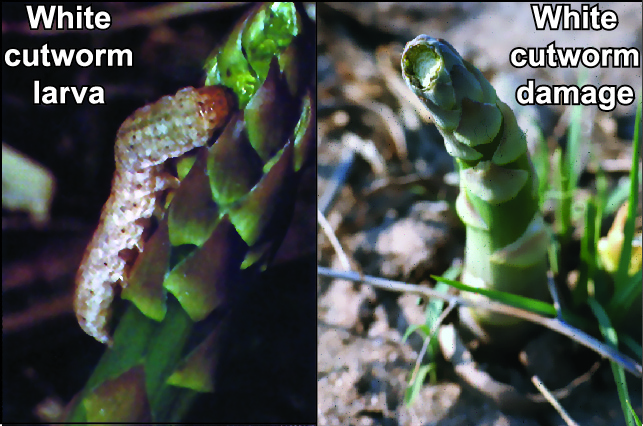
It can be difficult but important to balance harvest with fungicide applications to newly planted fields. In the coming weeks, young plantings that will not be harvested should be scouted for evidence of aecial lesions of the rust pathogen (Puccinia asparagi). These lesions are oval, light orange, at first raised, with lesion centers becoming sunken as the lesions age. Air currents and splashing rain carry the yellow aeciospores from the lesions to other fern branches and needles where they germinate and cause new infections when free moisture is present.
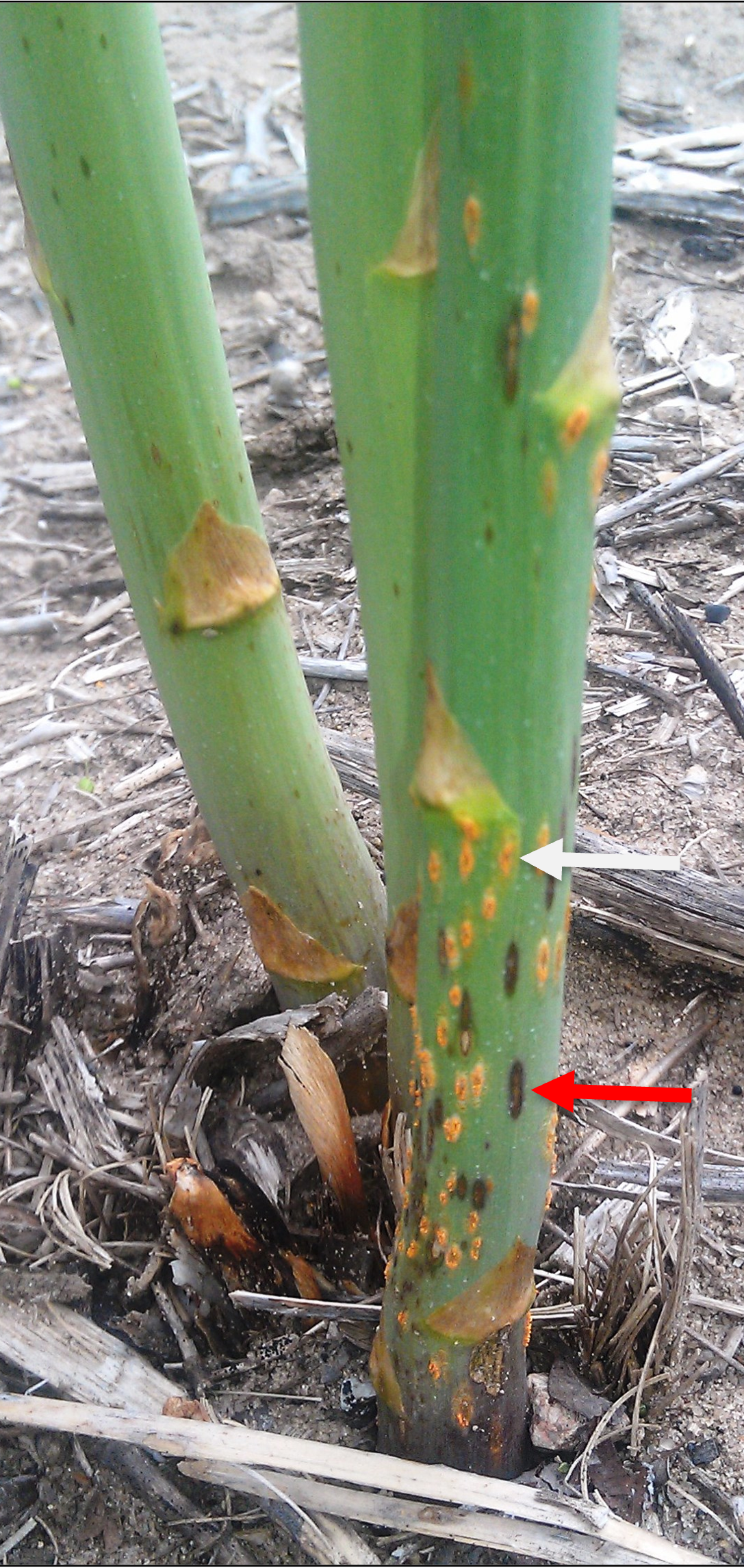
The aecial stage of rust is most abundant in April and May. However, if the shoots are harvested, rust does not have an opportunity to develop. In young plantings where the spears/stalks are not harvested, the aecia develop, providing spores for new infections, and thereby continue the rust life cycle. The next stage of the rust life cycle that will occur is the repeating or uredial stage. Urediospores are produced in great numbers and may resemble a reddish dust. They germinate in the presence of moisture and within 12 days may cause infections and yield a new generation of spores.
Although rust lesions affect only the fern, rust reduces the vitality of the entire asparagus plant resulting in slender spear or culls the following year. Rust also increases the plants’ susceptibility to Fusarium crown and root rot. It’s advisable to monitor asparagus fields, especially those newly established and least able to withstand stress and infection, for the rust pustules that may cause premature defoliation. If rust pustules are already present, the first spray should be a locally systemic rust fungicide (e.g., myclobutanil and tebuconazole) because it will provide some control of newly-established lesions and will limit infections that have not yet fully developed.
Protectants (e.g., chlorothalonil and mancozeb) will not impact the lesions already present but will prevent new lesions. Since the rust specific fungicides do not control purple spot, it makes sense to mix a protectant fungicide with a locally systemic rust fungicide to prevent a foliar epidemic on the fern in those young fields that will not be harvested and need to be protected so that they can become fully established. Please note that fungicides are to be applied only to the fern and are not applied to the spears to be harvested.
Brassicas and greens
Transplants of cabbage and other brassicas have been going in since early April.
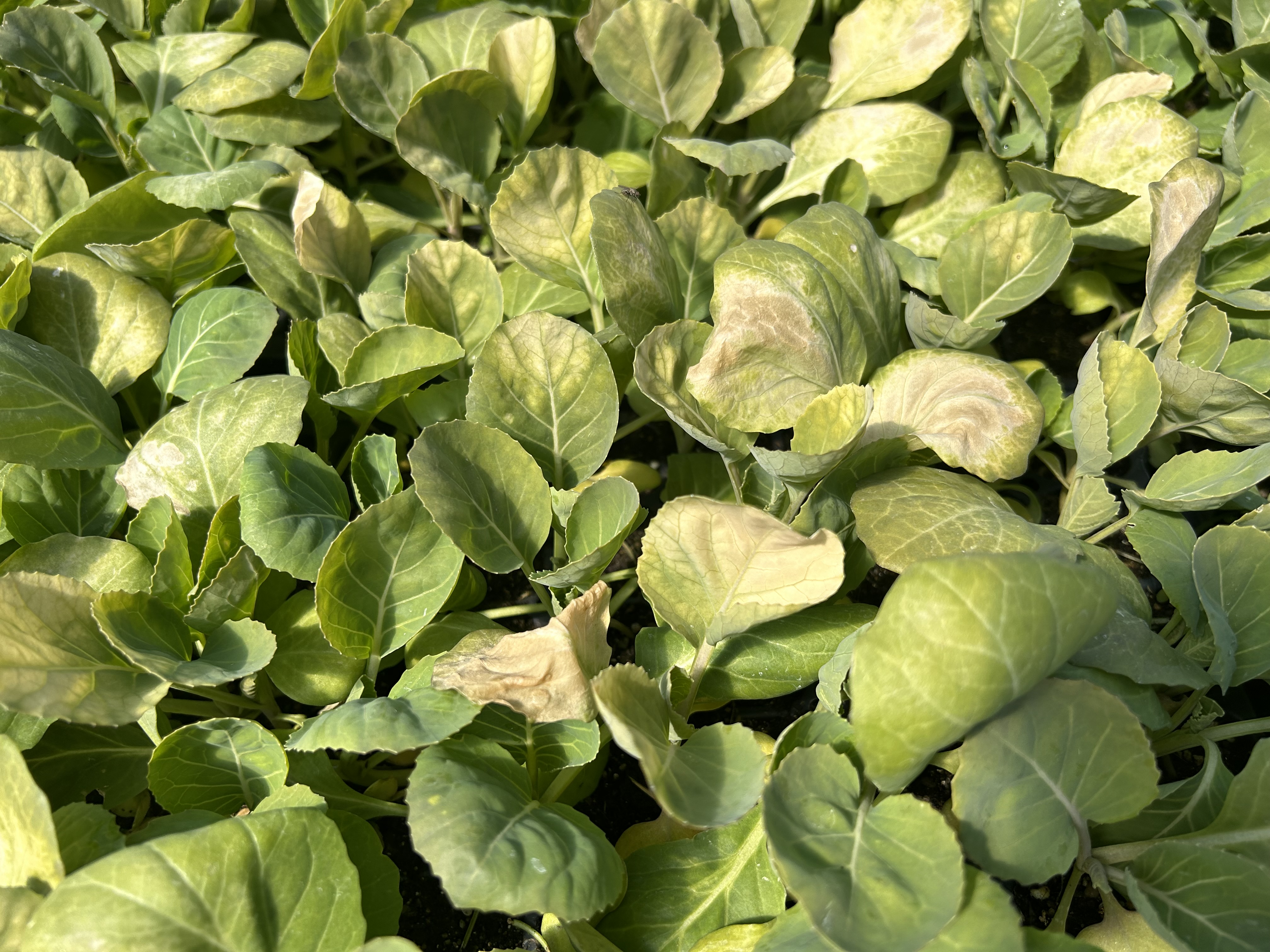
MSU Extension is working to test the accuracy of the cabbage maggot degree day model, lining up trap catches with model predictions. Flies are active at west Michigan sites we are monitoring, and eggs were detected on transplanted brassicas this past week. Verimark is consistently effective as a tray drench for this pest. Unfortunately, there are no great insecticide options for controlling it after planting. Row covers that are put on at planting and kept on provide excellent control when possible.
Carrots and celery
Early-planted processing carrots were germinating on the west side of the state this week and are expected to pop soon. Celery transplanting is ongoing. Similarly, in the east side of the state, carrot and celery have started being planted.
Fruiting vegetables
The Michigan vegetable crop report from April 24 addressed bacterial symptoms and management in transplants. This week, we have some more information and pictures of abiotic issues from things like ethylene, sulfur dioxide and temperature effects. Growing warm-season plants in a greenhouse in the early spring is like operating a space station. There is such a small margin for error in the climate control that tips the balance out of favor. Proper design and routine heater maintenance is important for preventing build-ups of pollutants in the transplant growing space. Each system has its own needs, but some basic maintenance includes checking for and removing creosote buildup in the flue and ash buildup at the air intake gate, installing a flue cap to prevent downdrafts, or sealing firebox doors with rope gaskets and flue pipe connections with gasket cement.
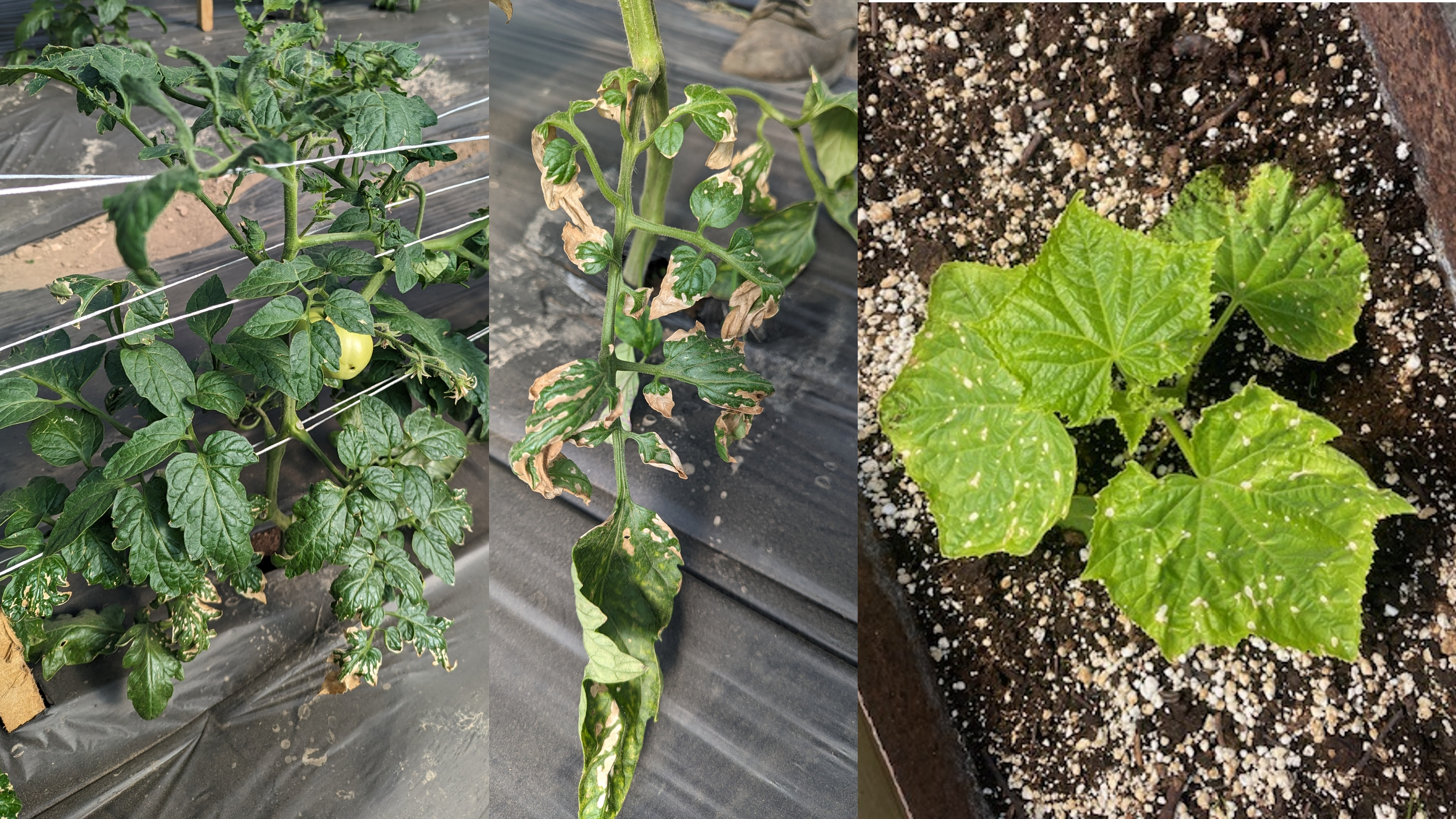
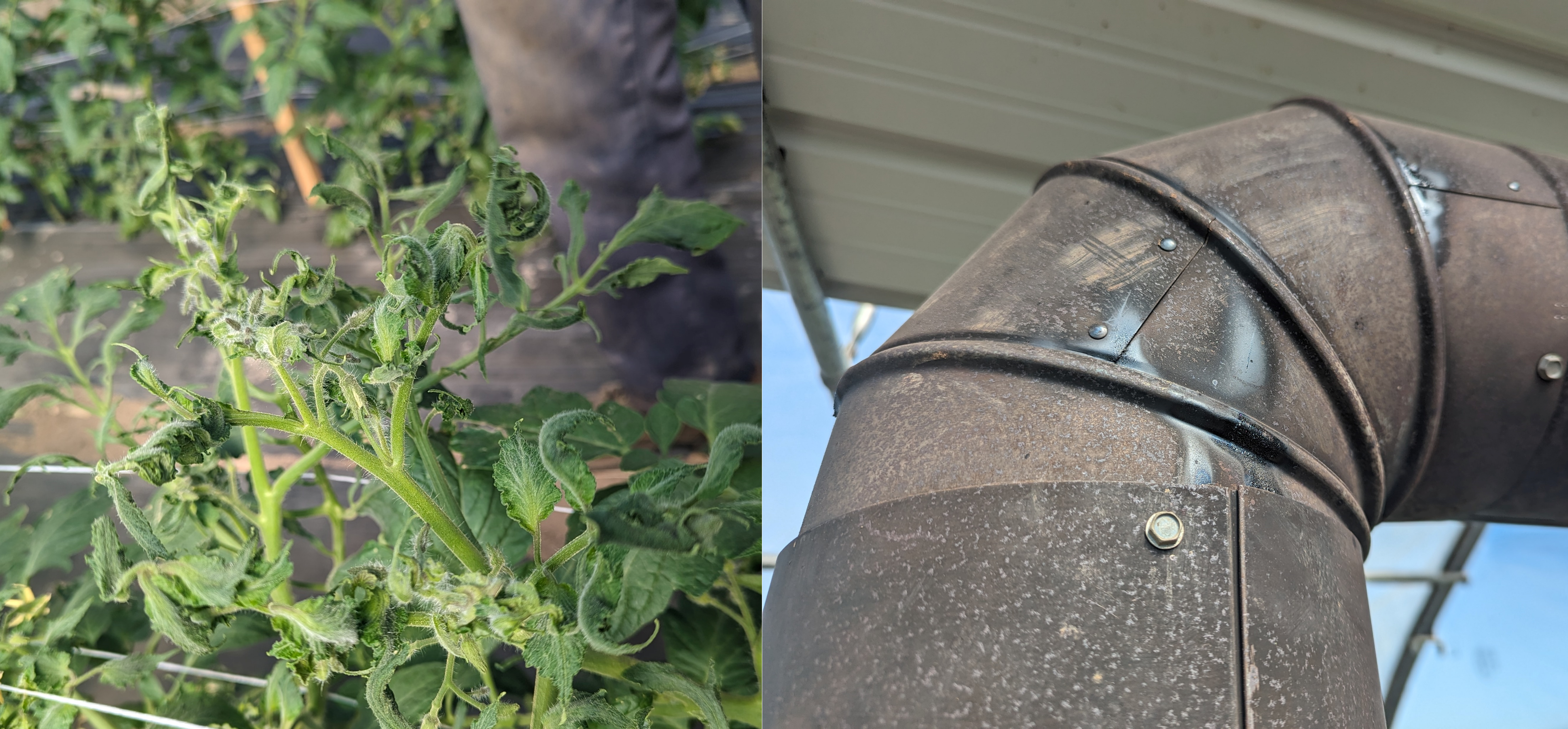
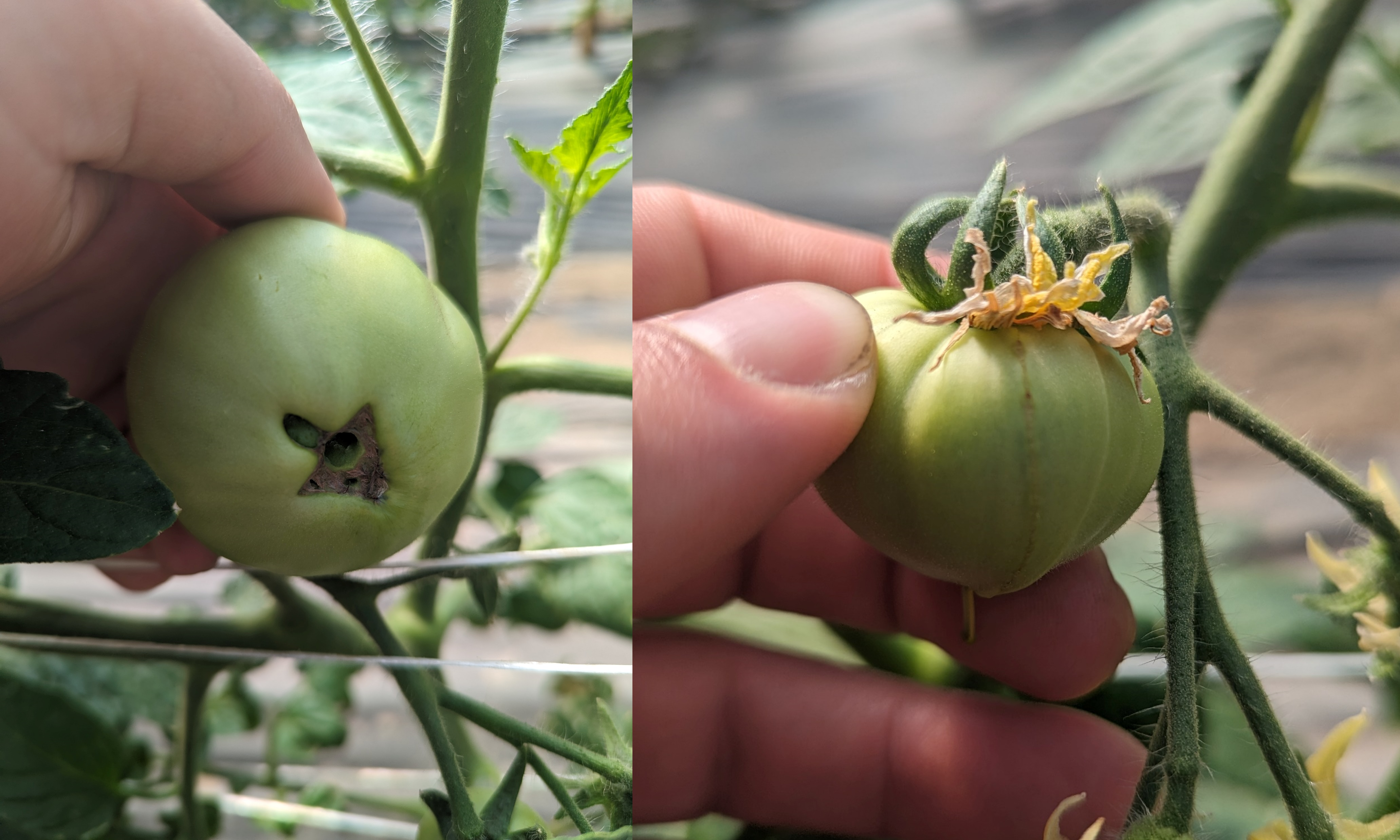
Onions and garlic
As sowing wraps up, onion transplants were going out over the past week on farms big and small. Sown onions were emerging and growing, and previously planted sets and transplants were pumping out leaves.
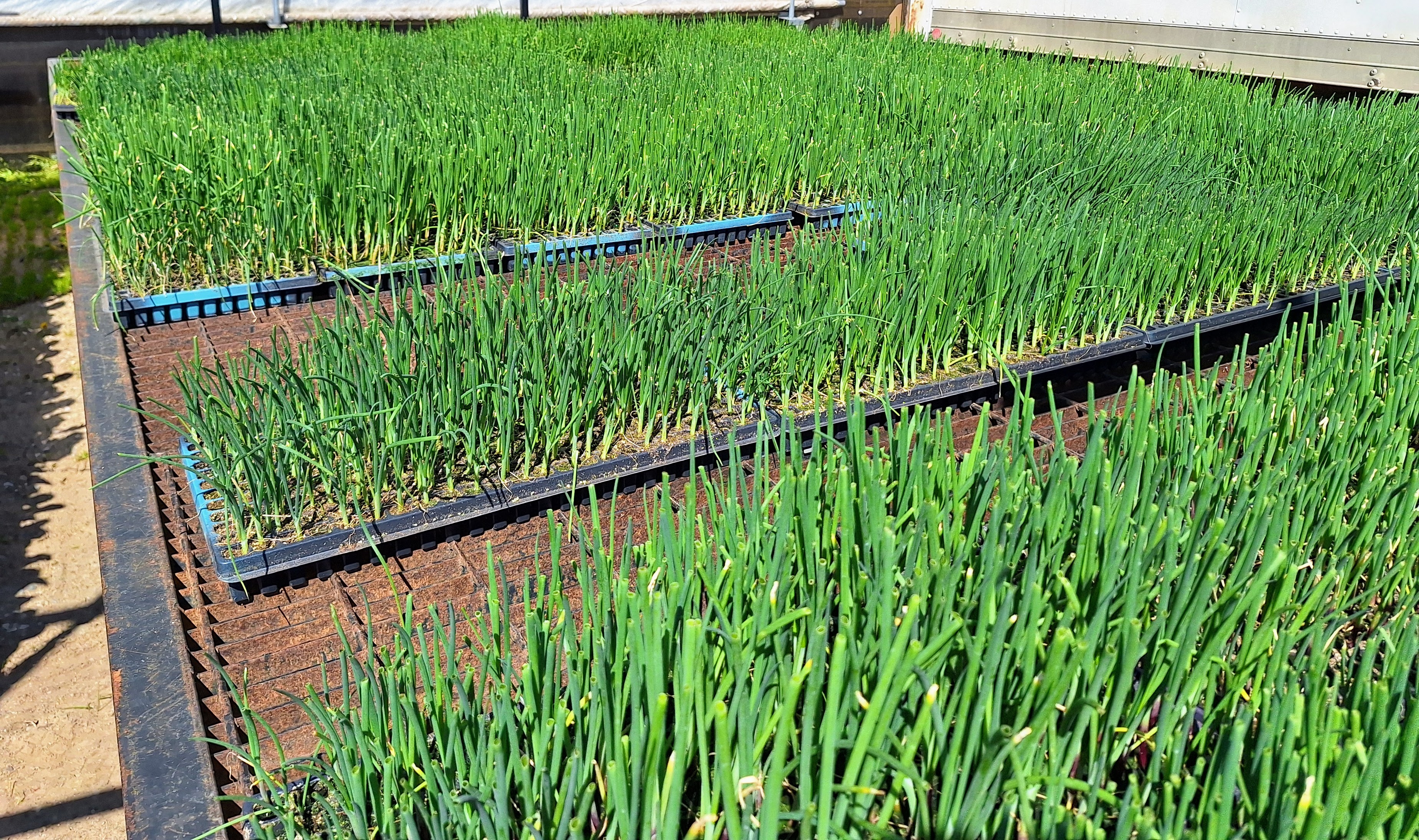
Fall-planted garlic is up to 7 or 8 inches tall now in some areas.
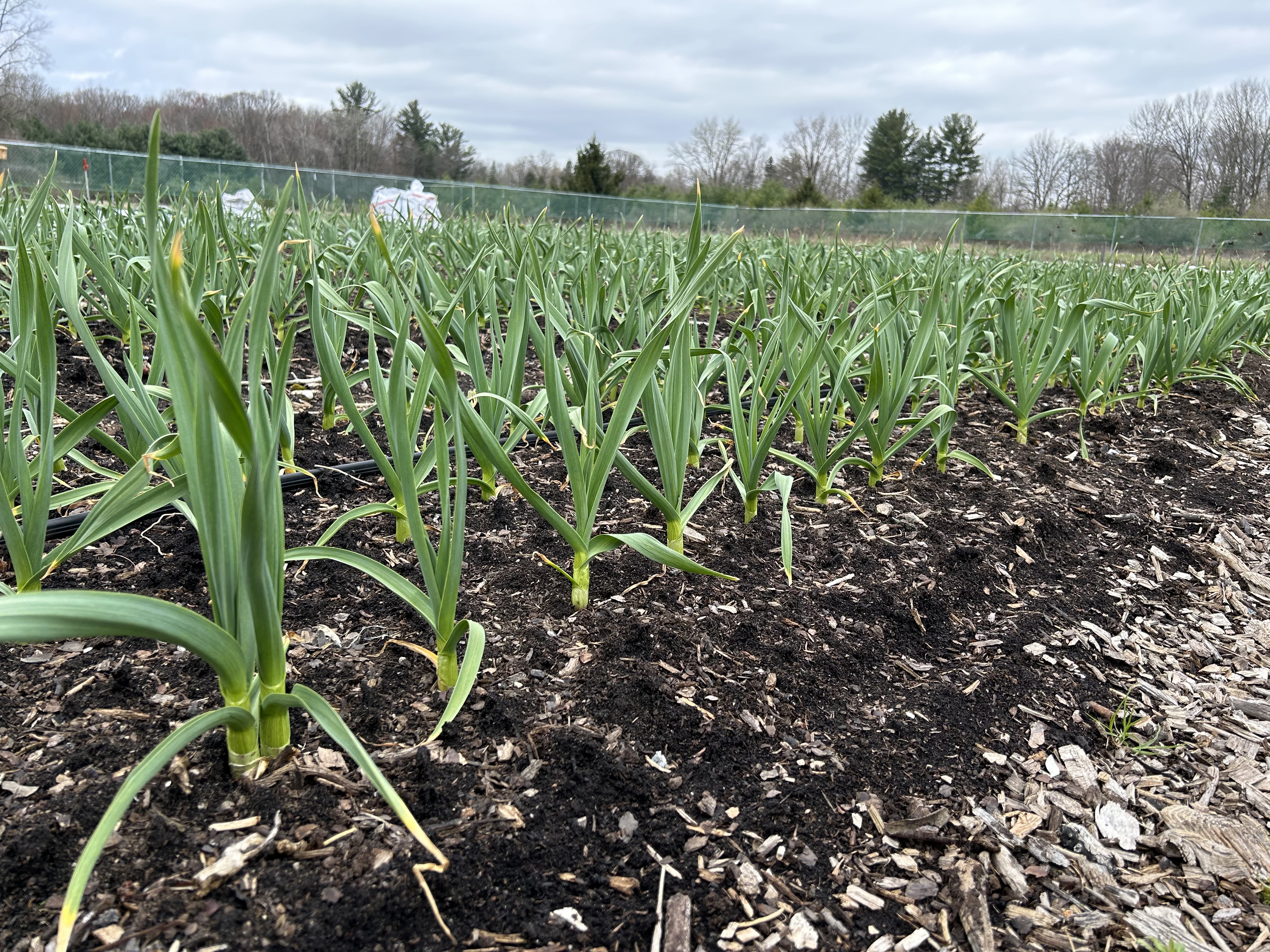
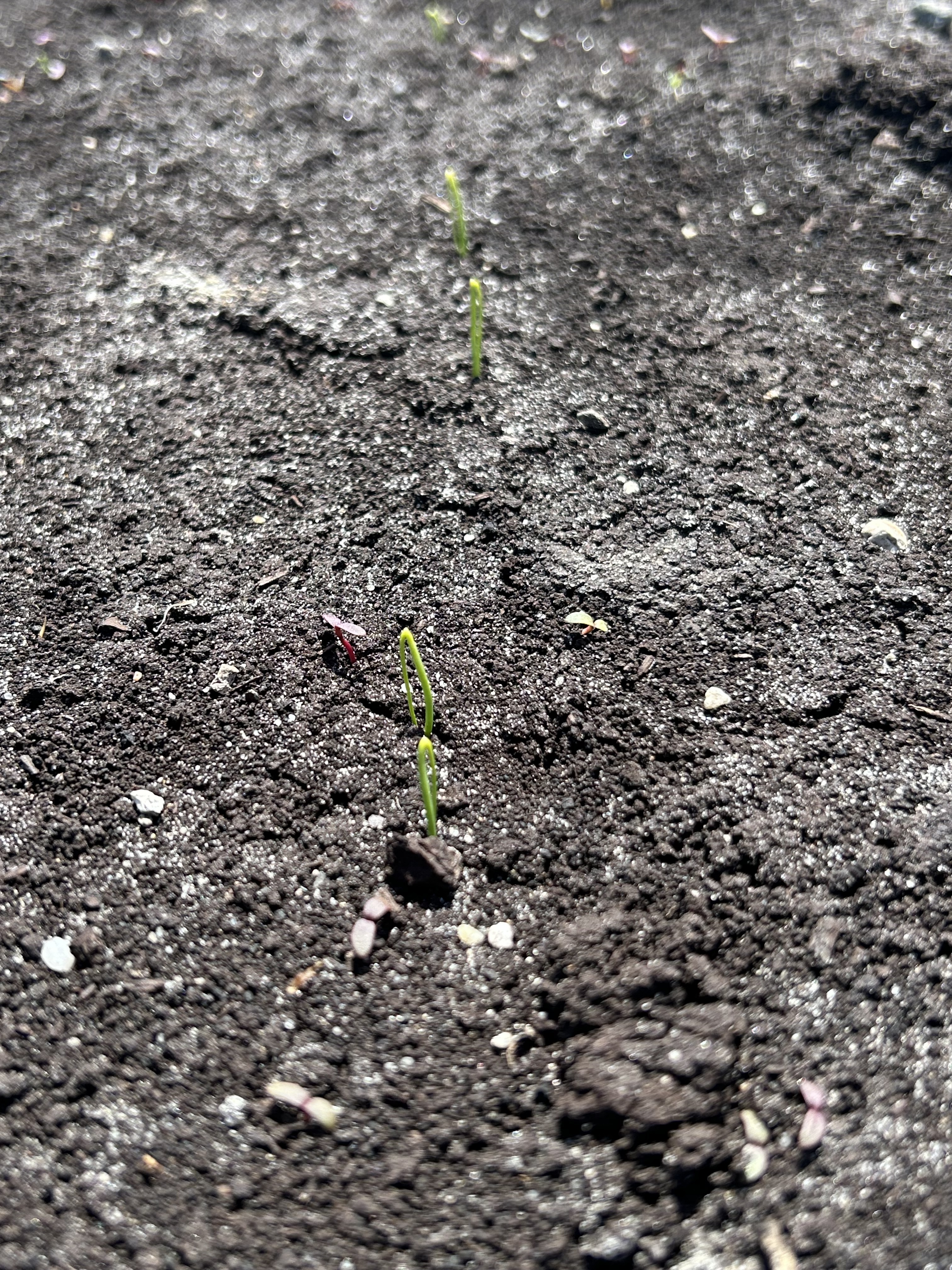
Root crops and potatoes
Root crops are up and have been at a standstill, but are starting to grow now with the moisture and warmer weather.
Of course, weeds will start to grow too! Turnips and weeds were at an ideal stage for mechanical weeding at one location this week. A number of manufacturers have developed steerable or camera guided toolbars that allow growers to weed right up to the row, and use in-row weeding tools. These take some fine tuning and experimentation to kill weeds without injuring crops, but can be effective. They are something to consider for this crop group where there are limited herbicide options available.
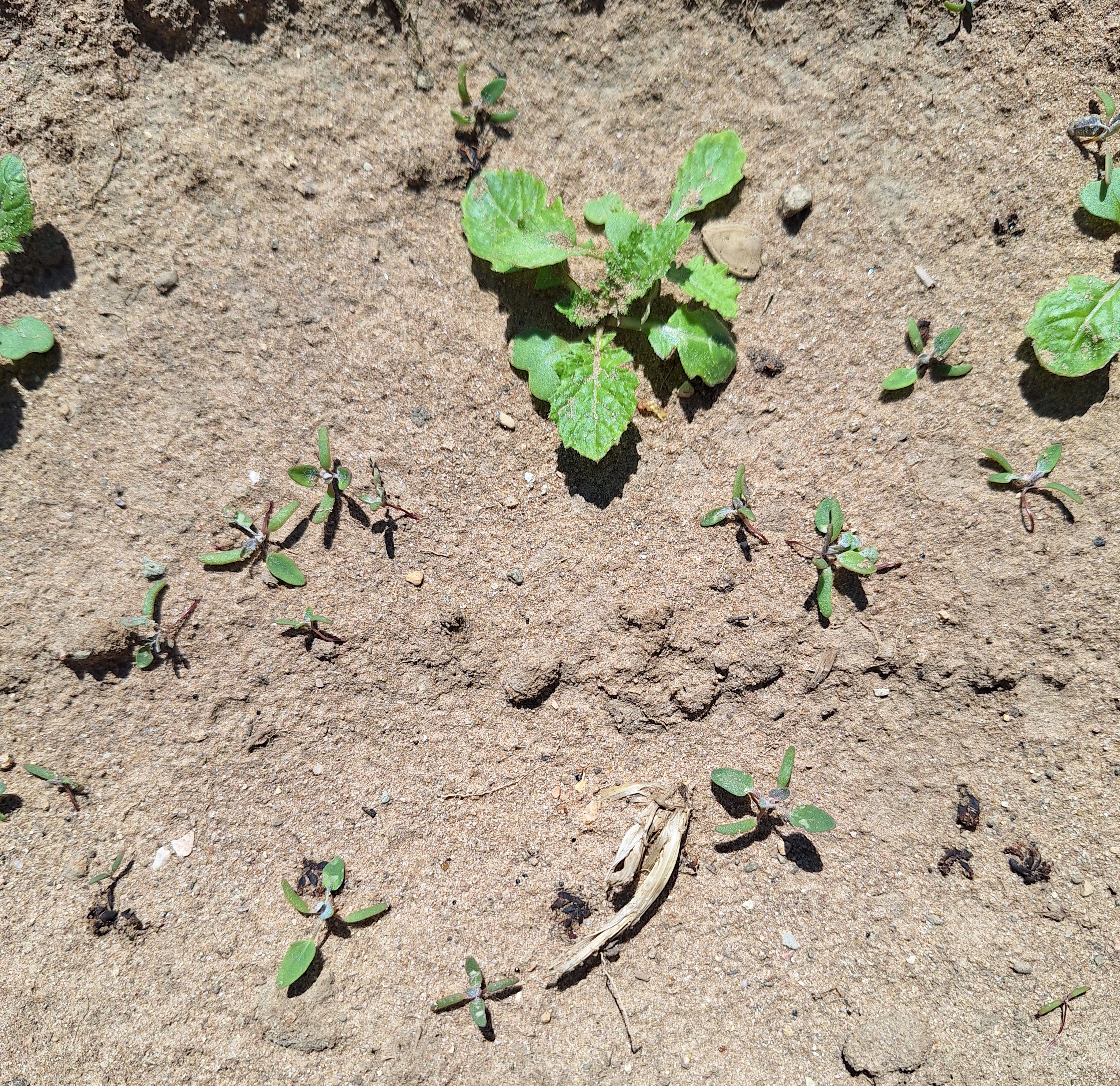
For brassica root crops, cabbage maggot flies were active at locations MSU Extension is monitoring. Egglaying had begun at two locations, though eggs were only detected on large, volunteer turnips and transplanted cauliflower. Post-plant applications of insecticides could begin as sown crops get larger, roots swell and plants become more attractive to flies. Weekly, broadcast applications of the pyrethroid Mustang Maxx provided some suppression in past trials in turnips, but did not provide standalone control. Hero is a combination of the active ingredient in Mustang Maxx, zeta cypermethrin, and bifenthrin. It has a longer PHI than Mustang Maxx. It could be a product to consider. To be optimally effective, insecticide needs to reach soil around the plant base where flies lay eggs. Banded applications are something to consider, as they allow product to be concentrated into a narrower area where the pest is active. Band width can be adjusted to minimize “misses” as the sprayer moves and row spacings change slightly, from planter pass to planter pass.
Strawberries
Flowers have emerged. With the frost last week, many growers used overhead irrigation to protect open blooms. Irrigation for frost and the on-off rain we have been having can make it so that fungicides have a hard time sticking. If sprays are needed, use systemic options and treat early in the morning for the most time for the plant to absorb the fungicide before the next watering. With bloom and bee activity, do not use insecticides. Cool, wet conditions can favor angular leaf spot, a bacterial disease. The only effective bacterial controls are copper formulations. Growers are looking at early season herbicides to control overwintering weeds and have begun spreading straw. When selecting an herbicide, check the preharvest interval.
Events
- May 2, 7-8 a.m., Field Crops Virtual Breakfast Series: Staging Crop Growth Stages
- May 7-8, 2024 Agritourism Summit and Pre-Summit Farm Tour
- May 9, 7-8 a.m., Field Crops Virtual Breakfast Series: Managing Corn and N After Waterlogging
- May 13, St. Joseph County Pesticide Applicator Training
- May 15, Hillsdale County Pesticide Applicator Training
- May 16, 7-8 a.m., Field Crops Virtual Breakfast Series: Post Weed Control Management
- May 23, 7-8 a.m., Field Crops Virtual Breakfast Series: Dry Bean Planting Options
- May 30, 7-8 a.m., Field Crops Virtual Breakfast Series: Wheat Fungicide Recommendations
- May 31, Oakland County Pesticide Applicator Training
- June 6, 7-8 a.m., Field Crops Virtual Breakfast Series: Sprayer Setup
- June 8, 9 a.m.-4 p.m., Soil and Composting Field Day
- June 11, 6:30-8 p.m., Western Lake Erie Basin State of the Lake Meeting: Lenawee County
- June 13, 7-8 a.m., Field Crops Virtual Breakfast Series: Irrigation Management
- June 13, 6:30-8 p.m., Western Lake Erie Basin State of the Lake Meeting: Monroe County
- June 18, 6:30-8 p.m., Western Lake Erie Basin State of the Lake Meeting: Hillsdale County
- June 19, 9 a.m.-1:30 p.m., Food-Grade Grains Field Day
- June 20, 7-8 a.m.,Field Crops Virtual Breakfast Series: Wild Weather for Hay
- June 27, 7-8 a.m., Field Crops Virtual Breakfast Series: Insect Update Beneficials & Corn Borer
- July 11, 7-8 a.m., Field Crops Virtual Breakfast Series: Cercospora for Sugarbeets
- July 18, 7-8 a.m., Field Crops Virtual Breakfast Series: White Mold - Tar Spot Spraying – Will it Pay?
- July 25, 7-8 a.m., Field Crops Virtual Breakfast Series: Hot Topics Q&A Session
- Aug. 1, 7-8 a.m., Field Crops Virtual Breakfast Series: Cover Crops After Wheat
- Aug. 8, 7-8 a.m., Field Crops Virtual Breakfast Series: MSU Diagnostic Lab Topics
- Aug. 15, 7-8 a.m., Field Crops Virtual Breakfast Series: Field Crops Nematode Update
- Aug. 22, 7-8 a.m., Field Crops Virtual Breakfast Series: Lime Recommendations for Field Crops
- Aug. 29, 7-8 a.m., Field Crops Virtual Breakfast Series: Maximizing Wheat Yield Potential
- Sept. 5, 7-8 a.m., Field Crops Virtual Breakfast Series: Drought-Proofing Agriculture with Drainage Water Recycling
- Sept. 12, 7-8 a.m., Field Crops Virtual Breakfast Series: Grain Marketing
- Sept. 19, 7-8 a.m., Field Crops Virtual Breakfast Series: Late Season Weed Control
This work is supported by the Crop Protection and Pest Management Program [grant no. 2021-70006-35450] from the USDA National Institute of Food and Agriculture. Any opinions, findings, conclusions, or recommendations expressed in this publication are those of the author(s) and do not necessarily reflect the view of the U.S. Department of Agriculture.



 Print
Print Email
Email




